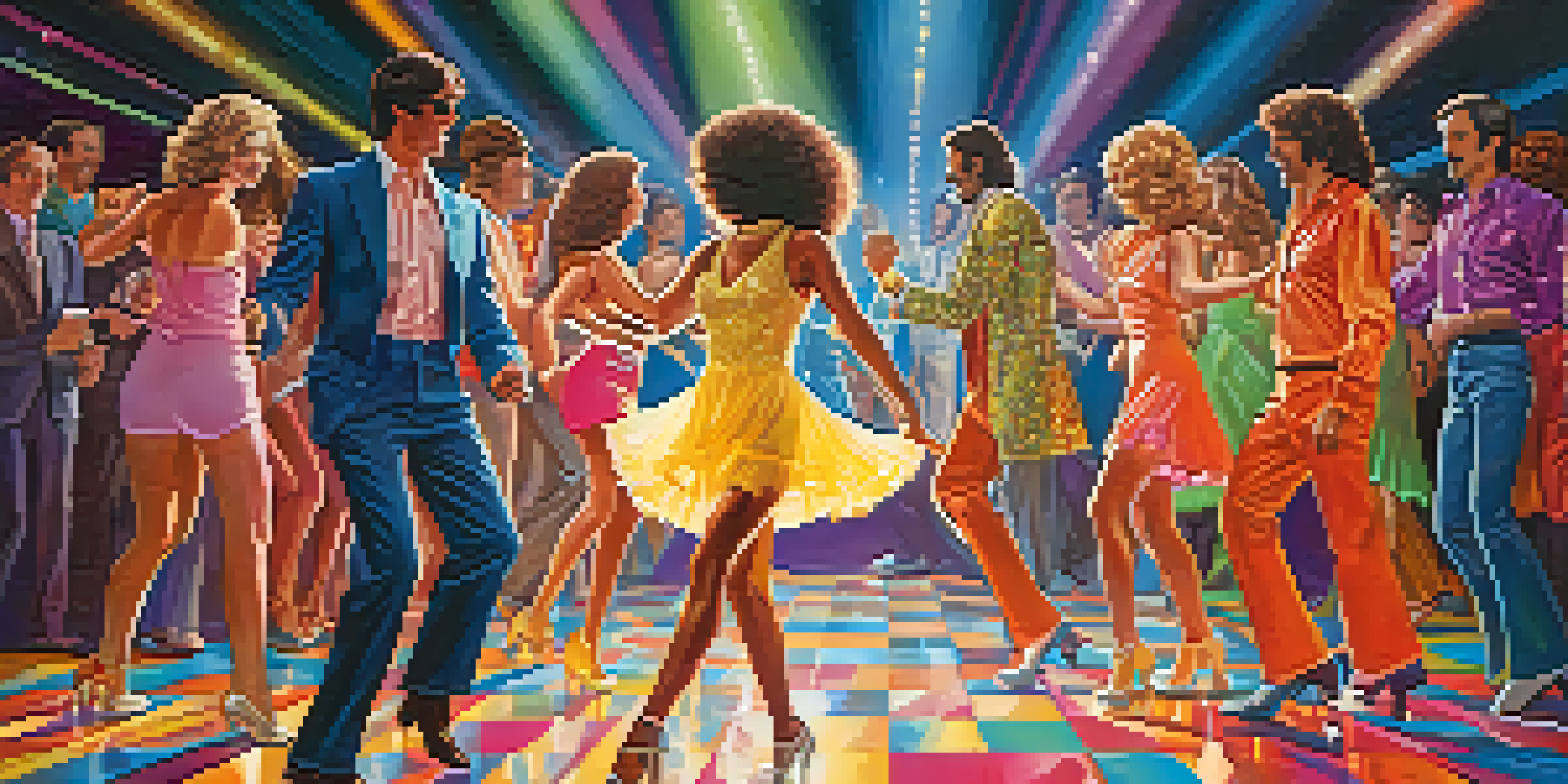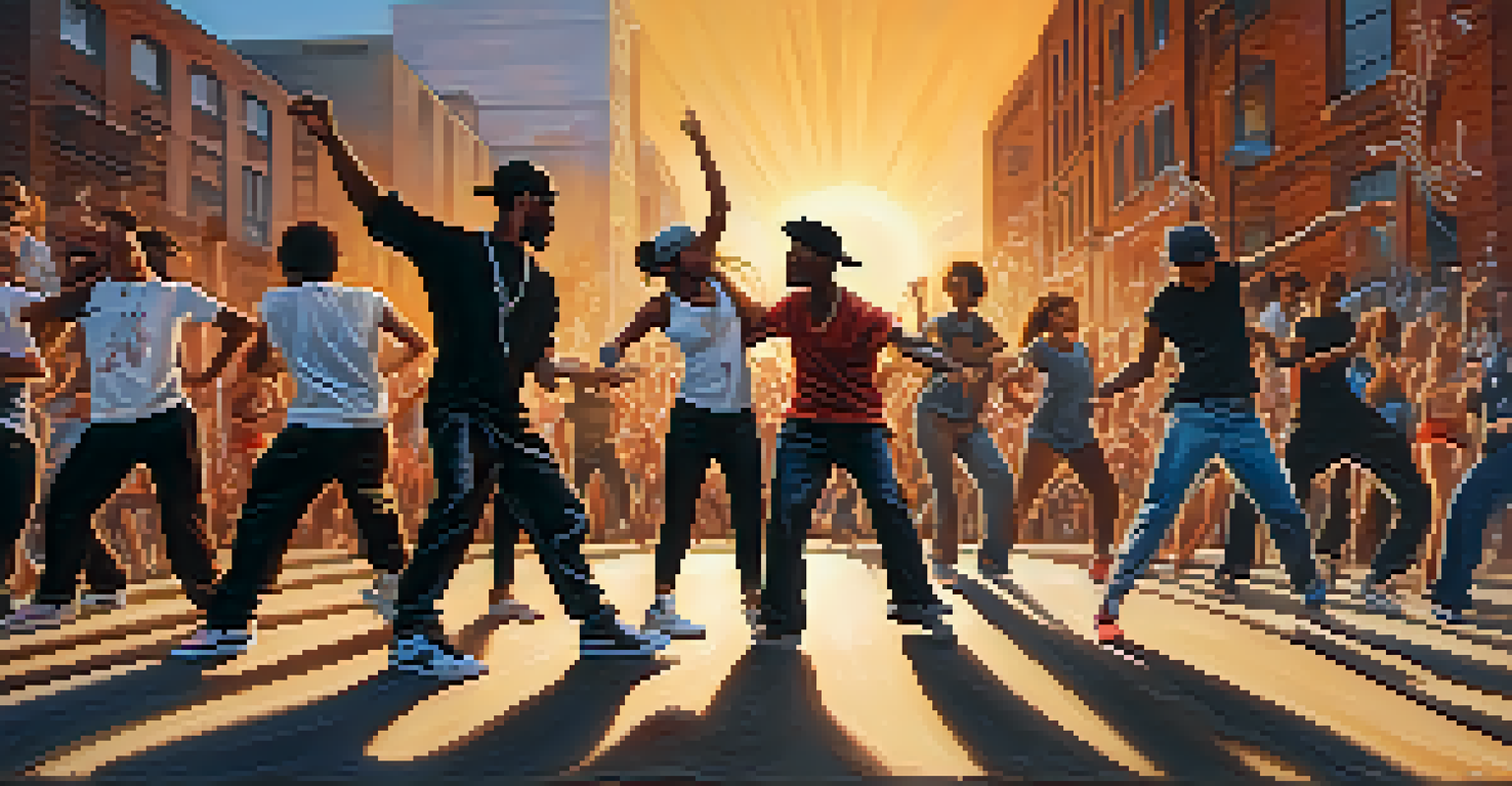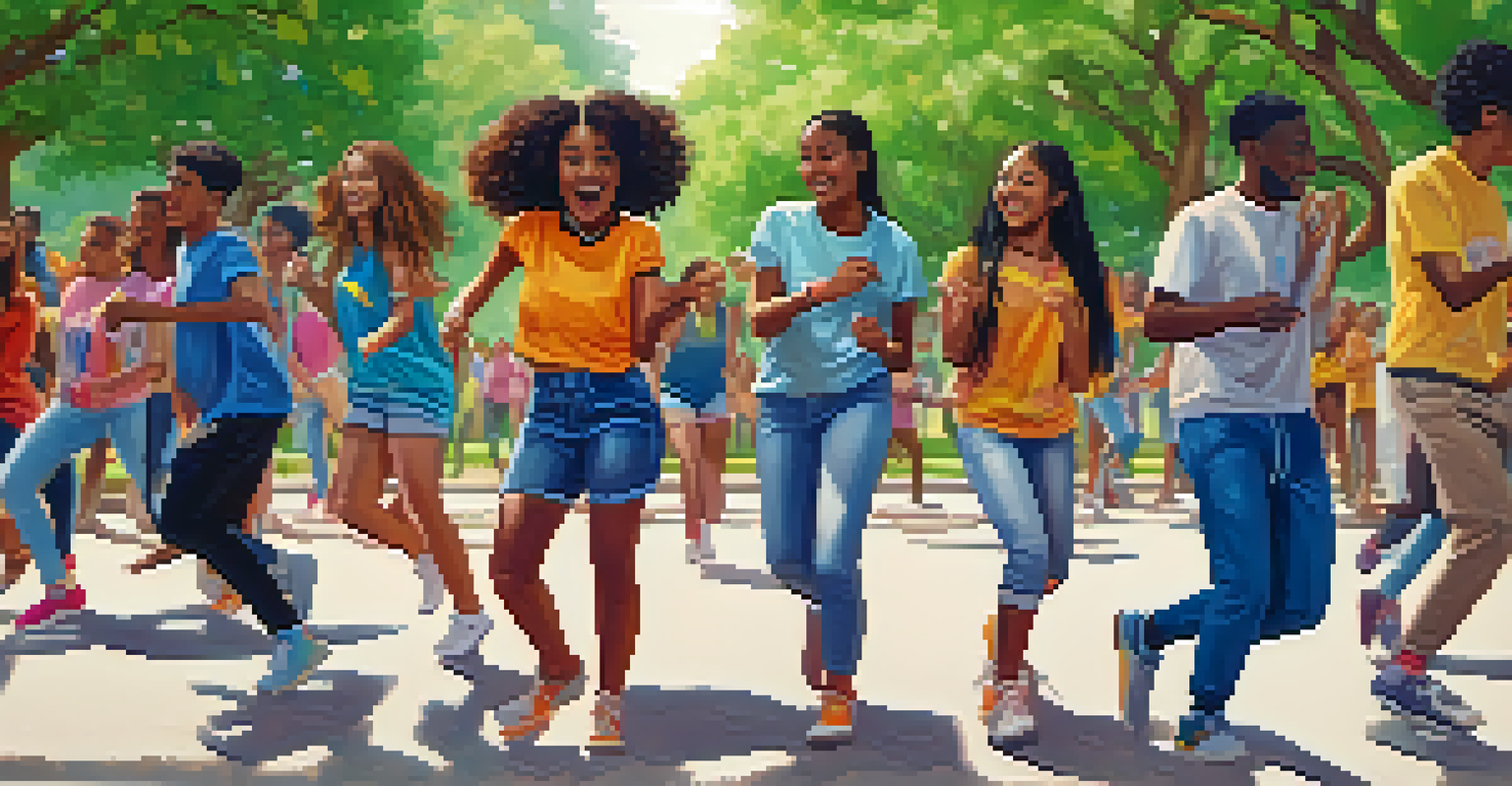The Influence of Pop Culture on the Evolution of Dance Styles

Understanding Pop Culture and Dance Styles
Pop culture refers to the ideas, trends, and phenomena that are popular in society at a given time. This can include music, fashion, film, and even social media. Dance styles, on the other hand, are the various forms of dance that often evolve from cultural influences and societal changes.
Dance is the hidden language of the soul.
The interplay between pop culture and dance is crucial; as new music genres emerge, they often give rise to unique dance styles. For instance, the rise of hip-hop music in the late 20th century led to the birth of breakdancing, a dynamic dance form that captured the energy of the streets.
Ultimately, understanding the relationship between pop culture and dance styles helps us appreciate how art forms reflect societal values and changes. Just as music influences dance, dance can also serve as a commentary on the culture it emerges from.
The Roaring Twenties and Jazz Dance
The 1920s were a vibrant time in American history, characterized by economic prosperity and cultural shifts. Jazz music dominated the scene, and with it came a wave of new dance styles, such as the Charleston and the Black Bottom. These energetic dances mirrored the excitement of the era.

Jazz dance was not just about movement; it was a form of expression that allowed dancers to break free from traditional styles. The improvisational nature of jazz music encouraged dancers to showcase their individuality, leading to a more personal approach to movement.
Dance Reflects Cultural Evolution
Dance styles evolve in response to societal changes and emerging music genres, showcasing the dynamic interplay between art and culture.
As these dance styles gained popularity through dance halls and film, they became symbols of liberation and joy. The influence of jazz on dance can still be seen today, as many contemporary dance forms incorporate elements of this rich history.
The Birth of Disco and the Dance Revolution
The late 1970s ushered in the disco era, a time when dance floors became a haven for self-expression and freedom. With the rise of disco music, styles like the hustle and the bump took center stage, providing a communal experience for dancers. Nightclubs became the epicenter of this movement.
We don't stop dancing because we grow old; we grow old because we stop dancing.
Disco's influence extended beyond just music and dance; it also shaped fashion and lifestyle. Bright colors, sequins, and platform shoes became the norm, creating a vibrant visual representation of the dancing culture. The iconic Saturday Night Fever showcased this phenomenon, solidifying disco's place in pop culture.
As disco began to fade, its impact on dance remained, paving the way for subsequent styles like house and electronic dance music. The party atmosphere created during the disco era continues to influence today’s dance scenes, reminding us of the power of communal movement.
Hip-Hop and the Evolution of Street Dance
Hip-hop culture emerged in the 1970s in the Bronx, New York, and with it came a revolution in dance. Styles like breaking, locking, and popping developed organically from the streets, reflecting the urban environment and the experiences of the youth. Each style has its own unique flair and storytelling element.
The influence of hip-hop on dance is profound; it has transformed how dance is perceived and performed. Street dance competitions, known as battles, became platforms for dancers to showcase their skills, creativity, and personal style, often with an element of improvisation.
Social Media Shapes Dance Trends
Platforms like TikTok and Instagram have revolutionized how dance trends spread, allowing for rapid dissemination and participation from diverse voices.
Today, hip-hop continues to influence various dance forms, from commercial dance to contemporary performances. Its ability to adapt and evolve ensures that hip-hop will remain a significant force in the dance world for years to come.
The Connection Between Social Media and Dance Trends
In the digital age, social media platforms like TikTok and Instagram have become crucial in shaping dance trends. Short videos can go viral overnight, leading to the rapid spread of new dance challenges and styles. This instant connectivity allows dancers to share and learn from one another in unprecedented ways.
For instance, the 'Renegade' dance, created by Jalaiah Harmon, gained massive popularity through social media, showcasing how a single viral moment can create a dance sensation. Such trends often draw on previous styles while adding fresh elements, keeping the dance culture vibrant and ever-changing.
Social media not only amplifies dance trends but also democratizes the dance community. Anyone with a smartphone can participate, creating an inclusive environment where diverse styles and voices thrive.
Globalization and the Fusion of Dance Styles
As the world becomes more interconnected, dance styles from different cultures are blending together. Globalization allows for the exchange of ideas, enabling dancers to experiment with various influences. Styles like K-pop have gained international popularity, incorporating elements from hip-hop, jazz, and traditional Korean dance.
The fusion of dance styles creates a rich tapestry of movement that reflects our diverse world. For example, the incorporation of African dance rhythms into contemporary dance has led to innovative performances that celebrate cultural heritage while pushing artistic boundaries.
Globalization Fuses Dance Styles
The blending of various cultural dance styles creates innovative movements that celebrate diversity and foster cross-cultural understanding.
This blending of styles not only broadens the scope of dance but also fosters understanding and appreciation for different cultures. As dancers continue to collaborate across borders, the evolution of dance will undoubtedly reflect our increasingly global society.
The Future of Dance in Pop Culture
As we look ahead, the future of dance in pop culture appears bright and dynamic. With emerging technologies like virtual reality and augmented reality, new forms of dance experiences are on the horizon. Imagine a fully immersive dance performance where audiences can participate virtually, blurring the lines between performer and spectator.
Moreover, the evolution of music genres will undoubtedly influence dance styles in unexpected ways. Artists are constantly experimenting with sounds, which inspires dancers to create fresh movements that resonate with contemporary themes and ideas.

Ultimately, the relationship between pop culture and dance will continue to evolve, reflecting societal changes and advancements. As we embrace these transformations, we can look forward to witnessing the next wave of creativity in the world of dance.